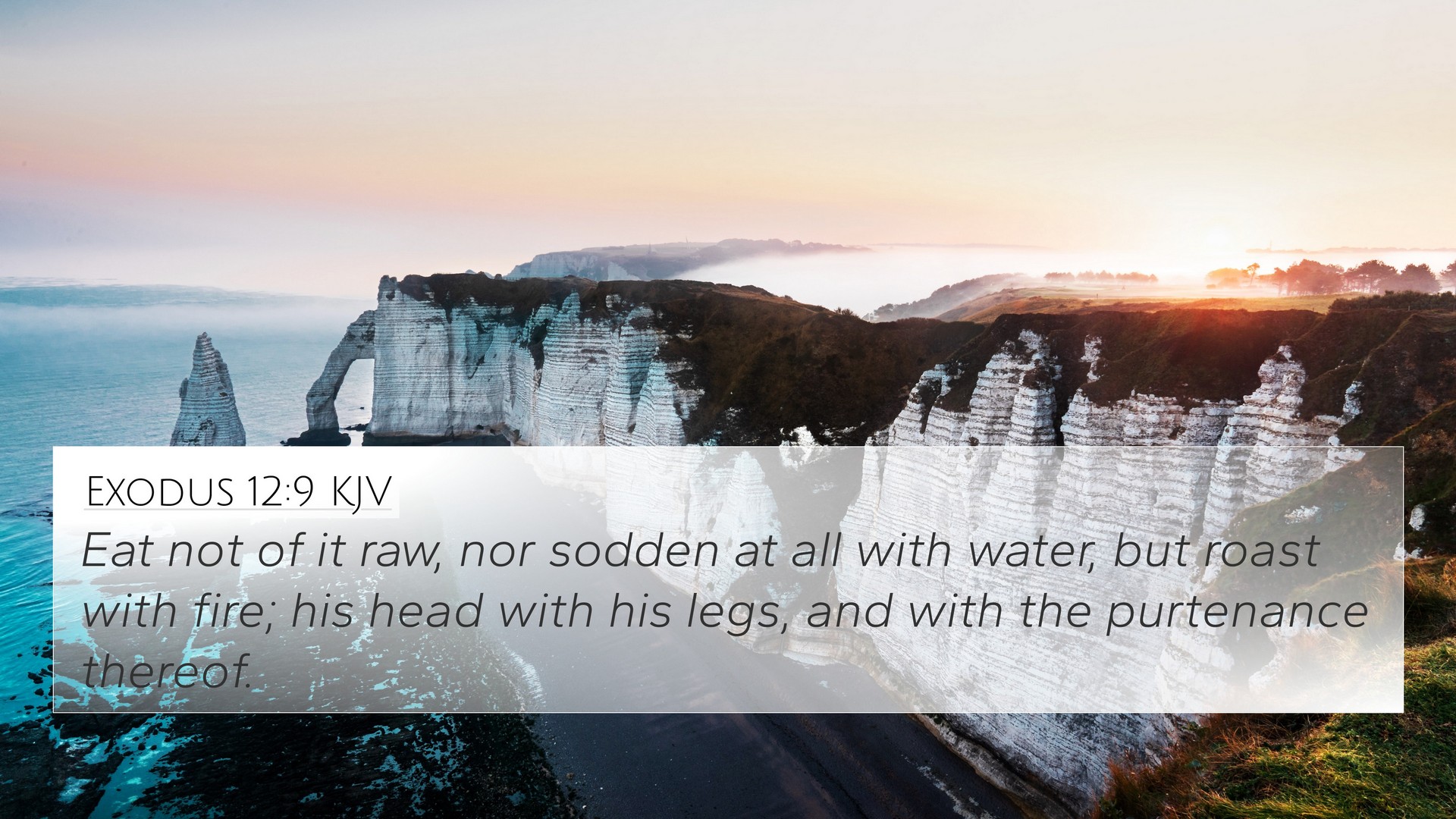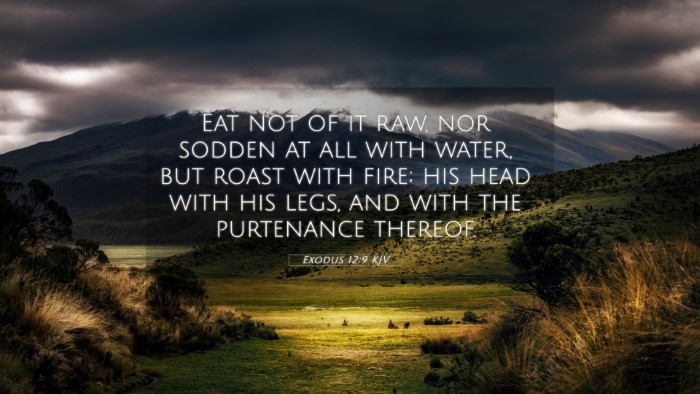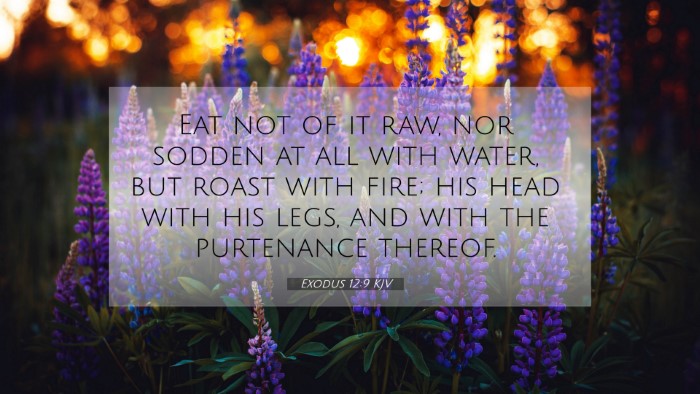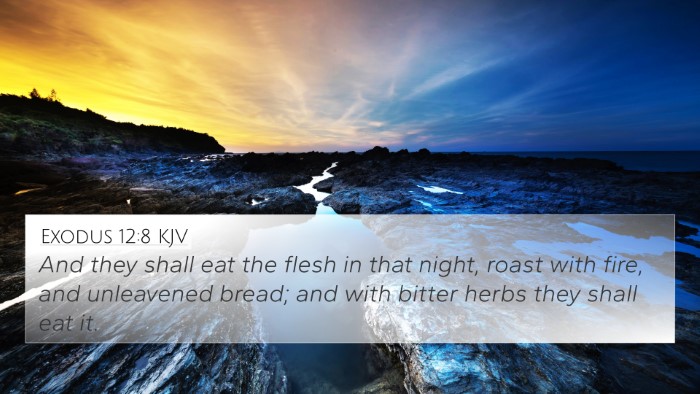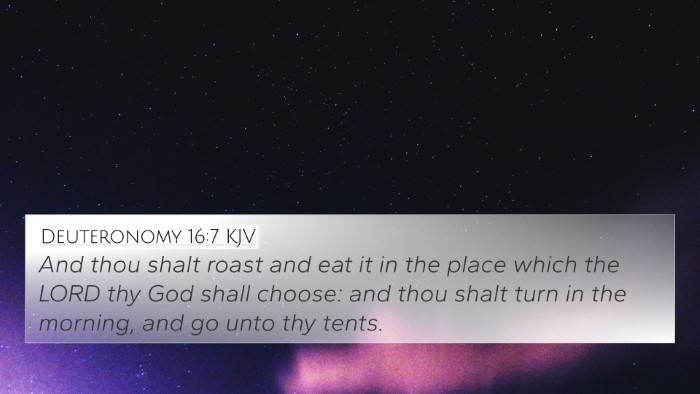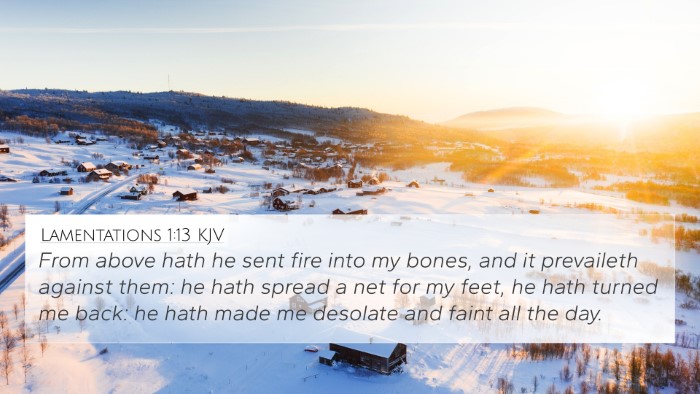Understanding Exodus 12:9
Exodus 12:9 states: “Do not eat any of it raw or boiled in water, but roasted in fire, its head with its legs and its entrails.” This verse provides specific instructions regarding the preparation of the Passover lamb, which carries significant theological implications.
Meaning and Context
This instruction is part of the larger narrative of the Exodus, where the Israelites are commanded to prepare for their deliverance from Egypt. Each detail in this command has rich symbolism and meaning, reflective of God's requirements for holiness and obedience.
Symbolism of the Lamb
The lamb represents purity and sacrifice, and the specific method of preparation emphasizes the significance of the roasted lamb in relation to Christ, who is often referred to as the Lamb of God. The details surrounding preparation are not arbitrary but serve to enhance understanding of sacrifice, redemption, and God's deliverance.
Insights from Commentaries
- Matthew Henry: He emphasizes that the roasting of the lamb represents a total commitment to the offering, signifying the completeness of Christ's sacrifice.
- Albert Barnes: Barnes highlights the significance of each part of the lamb being consumed, portraying a full acceptance of God's provision for salvation.
- Adam Clarke: Clarke expands on the cultural practices of the time, explaining that this method of preparation was different from typical cooking methods, thus setting the Passover apart as a sacred event.
Cross-References
This verse is linked to several other biblical texts, helping to deepen our understanding of its meaning:
- 1 Corinthians 5:7: "For Christ, our Passover lamb, has been sacrificed." This connection indicates the fulfillment of the Passover in Jesus Christ.
- John 1:29: "Behold, the Lamb of God, who takes away the sin of the world!" Again reflecting Christ as the ultimate sacrifice.
- Exodus 12:3: The instruction to choose the lamb connects to the full preparation of the Passover meal.
- Hebrews 9:22: "Without the shedding of blood, there is no forgiveness." Highlighting the importance of blood sacrifice in salvation.
- Isaiah 53:7: "He was oppressed, and He was afflicted, yet He opened not His mouth; He was led as a lamb to the slaughter." This verse ties Jesus' suffering to the Passover lamb.
- Revelation 5:12: "Worthy is the Lamb who was slain." Acknowledging the sacrificial nature of Christ in the heavenly context.
- Romans 3:25: "Whom God set forth as a propitiation by His blood..." indicating the purpose of Christ's sacrifice.
Thematic Connections and Analysis
By cross-referencing these scriptures, we can see a clear pattern of God’s plan of salvation through Jesus Christ as the Lamb. Exodus 12:9 not only describes a historical event but also foreshadows the ultimate sacrifice of Christ.
Tools and Methods for Cross-Referencing
For those looking to engage deeply with scripture, using a bible concordance or a bible cross-reference guide can be highly beneficial. These tools allow individuals to explore comparative Bible verse analysis and identify connections between various passages.
Conclusion
Exodus 12:9 serves as a pivotal verse in understanding God's requirements for holiness, the significance of the Passover lamb, and its prophetic connection to Christ. Through thoughtful examination and cross-referencing, we appreciate the depth found within this scripture and its place in the overall narrative of redemption.
Further Study
To deepen your understanding, consider exploring questions such as:
- What verses are related to Exodus 12:9?
- How do Exodus 12:9 and John 1:29 connect?
- What thematic connections exist between the Old Testament and New Testament concerning sacrifice?
